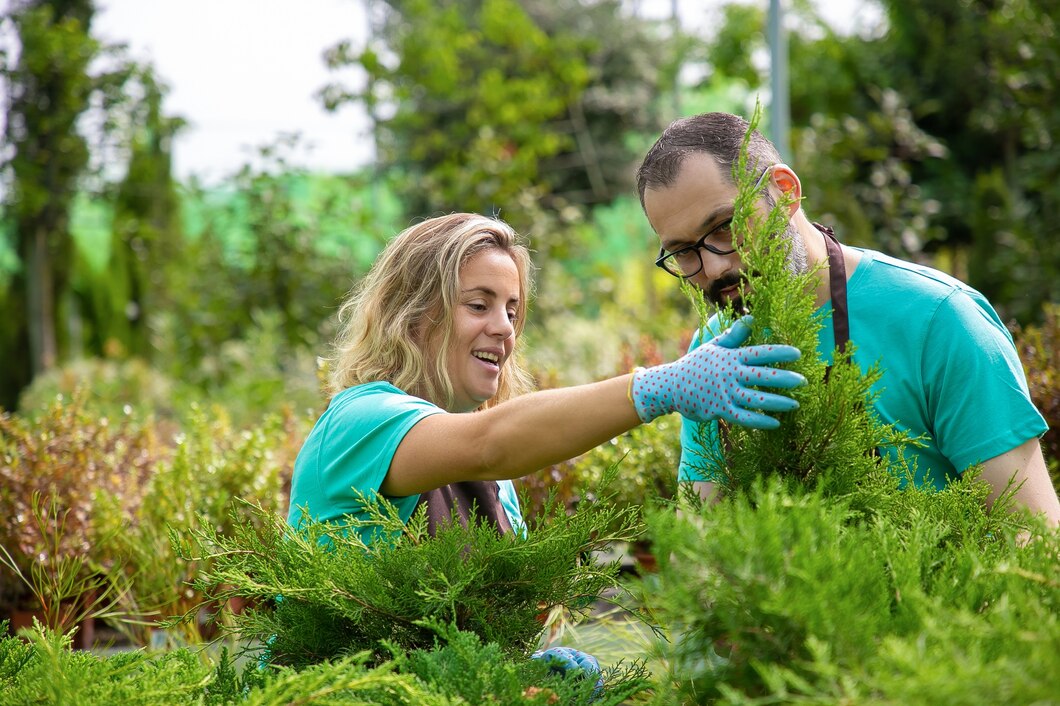Creating a thriving landscape requires more than just a green thumb; it requires careful planning and thoughtful plant selection. Choosing the right plants for your landscape is a critical step in ensuring long-term beauty, health, and sustainability. The perfect plants will not only look beautiful but also thrive in your specific environment with minimal effort. Whether you’re designing a flower garden, a vegetable patch, or an entire backyard oasis, this guide will help you make informed decisions on selecting the right plants for a thriving landscape.
1. Understand Your Climate Zone
Before selecting plants for your landscape, it’s essential to understand your climate zone. A plant’s success is highly influenced by local temperature, humidity, and precipitation levels. The USDA Plant Hardiness Zone Map is a great tool to determine which plants are best suited to your area based on its climate conditions.
How it helps:
- Optimal Growth: Plants that are well-suited to your zone will be more likely to thrive and grow strong.
- Cold and Heat Tolerance: Knowing your zone helps you pick plants that can tolerate the extremes of summer heat or winter cold, avoiding species that might struggle with seasonal changes.
- Regional Benefits: Some plants are native to your region, which makes them particularly well-adapted to local soil, pests, and diseases.
2. Assess Your Soil Type and Quality
The type of soil in your yard has a significant impact on the success of your plants. Different plants thrive in different soil conditions, so it’s essential to assess the soil type—whether it’s sandy, clay, loamy, or rocky—and its quality, including pH, drainage, and nutrient levels.
How it helps:
- Soil Testing: Conduct a soil test to check for nutrient levels and pH. Many plants have specific soil requirements (e.g., some prefer acidic soil, while others thrive in alkaline conditions).
- Improved Growth: By choosing plants that match your soil type or amending your soil to better suit the plants you want, you’ll ensure healthier growth and fewer challenges in maintaining your landscape.
- Drainage Considerations: Plants like succulents need well-drained soil, while other plants, like ferns, prefer moist conditions. Knowing your soil type helps you prevent root rot or dryness issues.
3. Consider Sunlight Requirements
The amount of sunlight your landscape receives will play a crucial role in selecting the right plants. Different plants require varying amounts of sunlight to grow and bloom properly, so it’s essential to observe the sunlight patterns in your yard throughout the day.
How it helps:
- Full Sun vs. Shade: Some plants thrive in full sunlight (6+ hours per day), while others may do better in partial shade or full shade. Make sure to choose plants based on their sunlight needs.
- Seasonal Variations: Consider how the sunlight might change across seasons, especially if you live in a region with significant seasonal shifts. Some plants may need more light during the winter, while others may do better with some protection during the summer.
- Maximize Energy: Placing plants that require full sun in sunny areas and shade-loving plants in cooler, shaded spots will ensure they grow optimally.
4. Match Plants to Your Landscape Style
Your personal aesthetic and the style of your home or garden should guide your plant selection. Whether you prefer a formal, structured garden or a relaxed, natural look, there are plenty of plants that will complement the style of your landscape.
How it helps:
- Cohesive Design: Choose plants that fit the overall theme or color scheme of your garden. For instance, if you’re going for a tropical look, opt for bold, exotic plants, whereas for a cottage garden, choose charming perennials and flowers.
- Textures and Heights: Mixing plants of different textures, colors, and heights adds visual interest and creates depth. Layer taller plants in the back and shorter plants in the front for a well-balanced design.
- Seasonal Interest: Select plants that provide beauty throughout the year. For example, certain plants may offer vibrant blooms in the spring, while others might provide rich fall colors or evergreen foliage for winter.
5. Consider Maintenance and Care Requirements
Every plant has its own care requirements, and some need more attention than others. Consider how much time and effort you’re willing to put into maintaining your garden when selecting plants.
How it helps:
- Low-Maintenance Plants: If you prefer a low-maintenance landscape, look for plants that are drought-tolerant, disease-resistant, and require minimal pruning. Many native plants and succulents fall into this category.
- High-Maintenance Plants: If you’re enthusiastic about gardening and have time to dedicate to your landscape, consider plants that need more regular care, like roses or certain types of vegetables.
- Watering Needs: Group plants with similar watering needs together. This helps you manage your landscape more effectively and avoid overwatering or underwatering.
6. Factor in Growth Habits and Size
It’s essential to think about the future growth of the plants you select. Some plants may grow much larger over time than you expect, which can impact the overall balance of your landscape.
How it helps:
- Space Considerations: Choose plants that are the appropriate size for the space you have. If you’re planting along a fence or in a narrow garden bed, make sure the plants won’t outgrow their space and block walkways or encroach on neighboring plants.
- Root Systems: Be mindful of plants with invasive root systems that might disrupt nearby plants or structures like sidewalks, driveways, or underground utilities.
- Maintenance as They Grow: Consider how much space the plant needs to expand and how often it will need pruning or thinning as it matures.
7. Plan for Seasonal Interest
A truly thriving landscape is one that offers beauty and interest year-round. Consider selecting plants that offer different types of interest during different seasons, such as spring blooms, summer foliage, fall colors, or winter texture.
How it helps:
- Spring: Choose plants with early blooms, such as crocuses, daffodils, or tulips, to welcome the season.
- Summer: Opt for vibrant, heat-tolerant plants like sunflowers, lavenders, or daylilies that will thrive in the warmest months.
- Fall: Select plants with striking autumn foliage, such as maples or ornamental grasses, to keep your landscape visually appealing as the weather cools.
- Winter: Incorporate evergreen trees, shrubs, or plants with interesting textures or berries, like holly or winterberry, to add visual interest during the colder months.
8. Incorporate Native and Pollinator-Friendly Plants
Native plants are naturally adapted to the local environment, making them easier to grow, more resistant to pests and diseases, and better for the local ecosystem. Pollinator-friendly plants help attract bees, butterflies, and other beneficial insects, ensuring a healthy, thriving garden.
How it helps:
- Biodiversity: Native plants support local wildlife, and including them in your landscape will help sustain biodiversity and create a more resilient ecosystem.
- Eco-Friendly: Native plants typically require less water, fewer chemicals, and less overall maintenance compared to non-native species.
- Attracting Pollinators: By selecting plants like lavender, echinacea, or milkweed, you’ll support pollinators and help increase the overall health of your garden.
Conclusion
Choosing the perfect plants for your landscape is an exciting and rewarding process. By considering factors such as your local climate, soil type, sunlight, and aesthetic preferences, you can ensure that your plants thrive and add beauty to your outdoor space. Whether you’re looking to create a low-maintenance garden or a vibrant, seasonal display, thoughtful plant selection will help you build a landscape that is not only beautiful but also sustainable and functional. Remember to plan carefully, select plants that fit your space and lifestyle, and enjoy the rewarding process of cultivating a thriving landscape.






